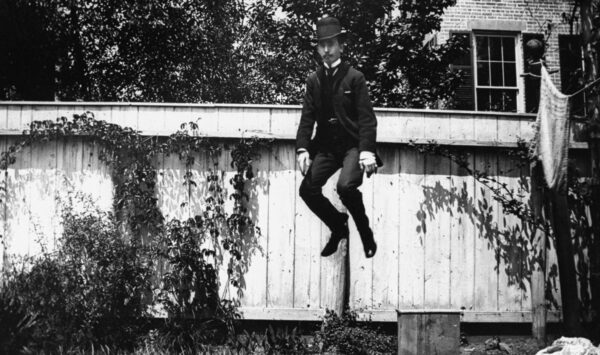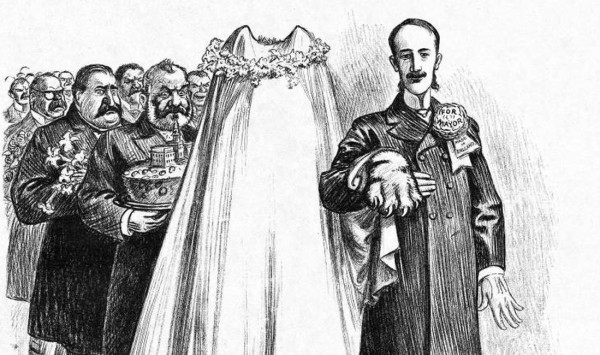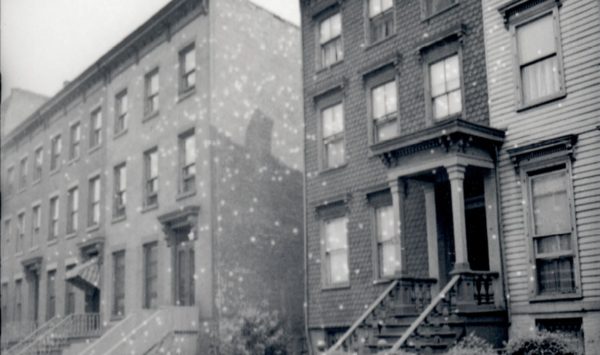BROOKLYN & THE “JUMPING SELFIE” (1886)

******************************************************************************************************************************** Brownstone Detectives investigates the history of our clients’ homes. The story you are about to read was composed from research conducted in the course of one of those investigations. Do you know the history of YOUR house? ******************************************************************************************************************************** In 1886, there was a LOT of jumping on Livingston Street. That year, a man by the name of Wallace G. Levison, an amateur photographer who lived on the street with his family, was testing a new type of film along with its ability to capture subjects in the process of motion. As the dawn of the 20th century approached, newer, more sensitive film emulsions were being developed that allowed pictures to be taken with faster and faster shutter speeds. Levison was set on experimenting with them. An avid photographer, he used the new technology both as a scientific tool and a recreational activity. In addition to being an amateur photographer, Levison was a chemist, inventor, and lecturer who founded the Departments of Mineralogy and Astronomy at the Brooklyn Institute of Arts and Sciences in the latter half of the 19th century. He may have also invented the concept of the “jumping selfie.” ORGANIZING SHUTTERBUGS Born at 1435 Pacific Street, Brooklyn (where – except for the 1880s-1900s – he would live for most of his life) in 1846, Levison attended Cooper Union, New York City’s prestigious free school for the sciences and arts, and graduated with a BS from Harvard in 1870. He was a member of the New York Mineralogical […]
HE KNOWS HIS JEWELS ARE SAFE (1892)

******************************************************************************************************************************** Brownstone Detectives investigates the history of our clients’ homes. The story you are about to read was composed from research conducted in the course of one of those investigations. Do you know the history of YOUR house? ******************************************************************************************************************************** When the daughter of a Tammany Hall “boss” is married, how does the new son-in-law protect their wedding gifts? By installing a jewel vault in the cellar of his brownstone, of course! THE JEWEL VAULT ON WASHINGTON PARK When Dr. Alexander F. Carroll married the eldest daughter of Brooklyn Democratic Boss, Hugh McLaughlin, in 1890, the New York Times reported that the “wedding gifts were of the most costly and elaborate nature.” “So valuable were they,” New York’s paper of record continued, “that when Mr. and Mrs. Carroll moved to their Washington Park home they had a great burglar-proof vault built under the sidewalk.” Apparently, all of the Boss’s numerous friends and supporters “remembered the happy couple substantially” which presented them with a good problem to have – how to safeguard their extreme amount of new-found jewel wealth. A list of the bridal presents “covered three columns in the Eagle,” noted The New York Sun, the presenters of which included then-President Cleveland. The value of the gifts were variously estimated at “from $100,000 to $200,000.” Mrs. Carroll was “very much worried because she has had to keep the mass of gold and silver received at the time of her marriage in the house and has had private detectives watching the premises.” […]
THE “GOODFELLAS” OF CUMBERLAND STREET

One of the Brownstone Detectives’ first House History Books, No. 231 Cumberland Street: The Story of a House, tells the story of an 1852 antebellum frame home just steps from Fort Greene Park. It’s an action-packed tome, replete with treachery, “poudrette,” “small art,” SROs, and the gangland figures from “Goodfellas.” Here is a brief timeline of the history of this single landmarked property, matched up with “spreads” from the book: THE HISTORY OF A BROOKLYN HOUSE The land beneath which No. 231 would someday rise, started out as a tobacco farm owned by the first Italian immigrant to New York, Pietre Cesare Alberti. The farmland would eventually be built upon in 1851-2, when builder John Ross constructed a row of three homes there. First owned by a woman with a tragic history, a melodrama involving treachery, another man, and an infant daughter – which became the gossip of the newspapers of the time – No. 231 was rented out throughout the the 1850s and 1860s, in addition to many returning Civil War veterans, to merchants and their small families. One of those merchants featured prominently in the founding of the Lafayette Avenue Presbytery Church. Before this, however, he had begun his interesting career as a Night Soil Man – starting a company which, amongst other “agricultural” endeavors, collected human excrement from the backyard privvies of Brooklyn, selling this “compost” to Long Island farmers as the appropriately – if euphemistically – named “poudrette.” The property was then owned by an immigrant, […]